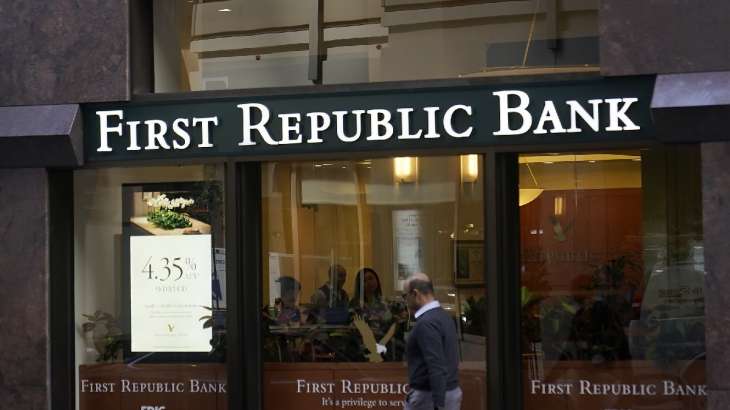Another US bank fails, set to be acquired by THIS group

Regulators seized troubled First Republic Bank and sold all of its deposits and most of its assets to JPMorgan Chase Bank in a bid to head off further banking turmoil in the US.
Third midsize US bank to fail
San Francisco-based First Republic is the third midsize bank to fail in two months.
It has struggled since the collapse of Silicon Valley Bank and Signature Bank and investors and depositors had grown increasingly worried it might not survive because of its high amount of uninsured deposits and exposure to low-interest rate loans.
Branches reopen as JPMorgan Chase Bank
The Federal Deposit Insurance Corporation said early Monday that First Republic Bank’s 84 branches in eight states will reopen Monday as branches of JPMorgan Chase Bank.
Regulators worked through the weekend to find a way forward before US stock markets opened. Markets in many parts of the world were closed for May 1 holidays on Monday.
The two markets in Asia that were open, in Tokyo and Sydney, rose.
As of April 13, First Republic had approximately USD 229 billion in total assets and USD 104 billion in total deposits, the FDIC said. At the end of last year, the Federal Reserve ranked it 14th in size among US commercial banks.
Before Silicon Valley Bank failed, First Republic had a banking franchise that was the envy of most of the industry.
Its clients — mostly the rich and powerful — rarely defaulted on their loans.
The 72-branch bank has made much of its money making low-cost loans to the wealthy, which reportedly included Meta Platforms CEO Mark Zuckerberg.
Flush with deposits from the well-heeled, First Republic saw total assets more than double from USD 102 billion at the end of 2019’s first quarter, when its full-time workforce was 4,600.
But the vast majority of its deposits, like those in Silicon Valley and Signature Bank, were uninsured — that is, above the USD 250,000 limit set by the FDIC. And that worried analysts and investors.
If First Republic were to fail, its depositors might not get all their money back.
Those fears were crystalised in the bank’s recent quarterly results. The bank said depositors pulled more than USD 100 billion out of the bank during April’s crisis.
San Francisco-based First Republic said that it was only able to stanch the bleeding after a group of large banks stepped in to save it with USD 30 billion in uninsured deposits.
Since the crisis, First Republic has been looking for a way to quickly turn itself around.
The bank planned to sell off unprofitable assets, including the low interest mortgages that it provided to wealthy clients. It also announced plans to lay off up to a quarter of its workforce, which totalled about 7,200 employees in late 2022. Investors remained sceptical.
The bank’s executives have taken no questions from investors or analysts since the bank reported its results, causing First Republic’s stock to sink further.
And it’s hard to profitably restructure a balance sheet when a firm has to sell off assets quickly and has fewer bankers to find opportunities for the bank to invest in.
It took years for banks like Citigroup and Bank of America to return to profitability after the global financial crisis 15 years ago, and those banks had the benefit of a government-aided backstop to keep them going.
ALSO READ | No conclusion of wrongdoing in SEBI application to SC: Adani Group
ALSO READ | Noida sees major jump in property prices with circle rates going up | READ DETAILS
Latest Business News
For all the latest Business News Click Here
For the latest news and updates, follow us on Google News.

